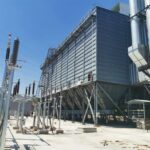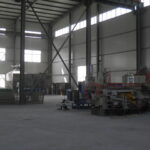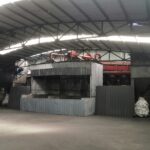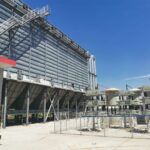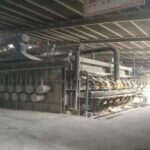Advantages and Disadvantages of Core Material Preparation Methods for Cored Wire
The so-called wire-feeding spheroidization (vermicularization or inoculation) refers to the process of wrapping core materials of specific composition and particle size into steel strips of certain thickness and width using a wire-coiling device, forming a cable-like cored wire coil with appropriate strength and high filling rate. This wire is then fed into the treatment ladle at a certain speed via a wire-feeding device to achieve spheroidization, vermicularization, or inoculation.
The core material is the key component. Currently, there are three preparation methods: fusion bonding, mechanical mixing, and layering. Each has its own advantages and disadvantages, as shown in the table below.
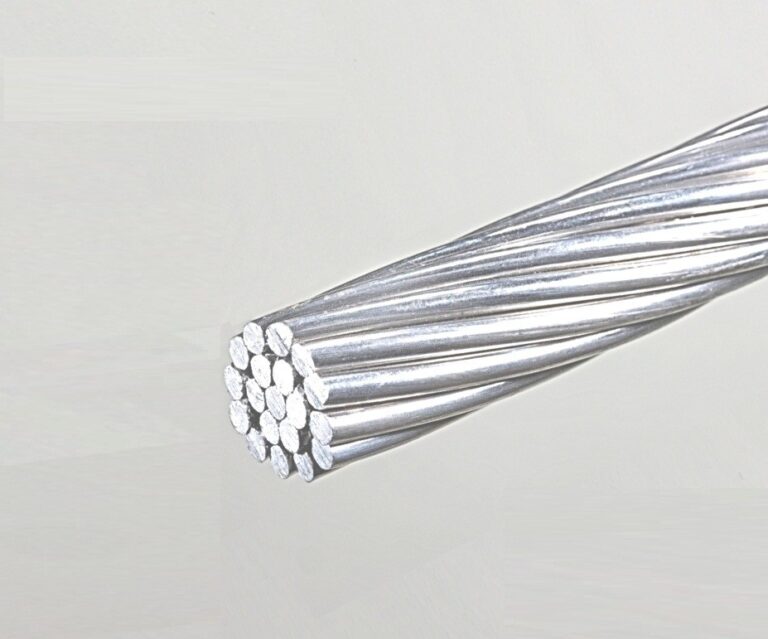
Type | Advantages and Disadvantages
1.Wire-Feeding Method
▶ Advantages
| 1) Fully utilizes the spheroidizing benefits of magnesium, making it easier to obtain fine, rounded graphite nodules and improving spheroidization effects.
2) Smaller temperature drop in molten iron. Compared to the sandwich method, the wire-feeding method reduces the temperature drop by an average of 10–20°C, enhancing the metallurgical quality and spheroidization of the molten iron.
|3) The wire-feeding spheroidization station can be enclosed and connected to a dust removal system, preventing smoke and dust from escaping during treatment and significantly improving the workshop environment.
|4) Since the treatment is performed under a cover, oxidation slag formation is reduced, casting quality improves, and the rejection rate decreases.
|5) Enables automated online control, reducing risks from manual operations.
6) Wide adaptability. Suitable for both small-batch ductile iron production and large-scale foundry line production.
▶ Disadvantages:
1) Molten iron tends to have greater shrinkage after wire-feeding spheroidization.
2) Higher initial investment for wire-feeding spheroidization.
3) Limited application in large castings.
2.Fusion Bonding Method
The core material for fusion bonding is prepared by melting, casting, cooling, crushing, and sieving the spheroidizing raw materials into suitable particles.
▶ Advantages:
Uniform composition. Magnesium and silicon exist as a magnesium-silicon intermediate alloy, which has a higher melting point than pure magnesium, making it easier to absorb during treatment and ensuring stable spheroidization. This type of core material is widely used in high-end ductile iron castings.
▶ Disadvantages:
The high magnesium content in the spheroidizer poses significant risks during melting, crushing, and sorting, requiring special protective measures. Additionally, it consumes more electricity, has higher costs, and results in elevated MgO content.
3.Mechanical Mixing Method
The core material for mechanical mixing is prepared by blending (passivated) magnesium, rare earth elements, ferrosilicon, etc., in specific particle sizes and proportions using a dedicated mixer in small batches.
▶ Advantages:
No fusion process is required, eliminating material loss due to melting, reducing costs, and resulting in lower MgO content.
▶ Disadvantages:
Due to the significant differences in the densities of the core material components, achieving uniform mixing is challenging. The weight and composition of the core wire per unit length can vary, leaving room for improvement to meet the high-quality requirements of castings.
4.Layering Method
The layered core powder method uses an eight-blade layering system and multiple independent weighing and feeding mechanisms to sequentially layer the core material components into the steel strip before coiling it into wire.
▶ Advantages:
No fusion process is required, eliminating material loss due to melting, reducing costs, and resulting in lower MgO content.
▶ Disadvantages:
The uniformity of core material composition per unit length requires further validation over time.
Impact of Cored Wire Technical Indicators and Performance on Casting Quality
Technical Indicators & Performance | Impact on Casting Quality
▶Chemical Composition| The chemical composition of the core material is fundamental to ensuring casting quality. The proportions of Mg and RE (Rare Earth) must be stable with minimal fluctuation. Suppliers and buyers may negotiate customized core material ratios and allowable deviation ranges as needed.
▶Specifications & Characteristics| The particle size of the core material should range from 0.1 to 2.5 mm. The mass fraction of particles smaller than 0.1 mm or larger than 2.5 mm should not exceed 5% of the total mass. The core material must remain dry, with moisture content ≤ 0.3%.
▶Magnesium Oxide (MgO) Content | For spheroidizing cored wire, the MgO content should not exceed 5.0% of the total magnesium content. High MgO levels increase slag inclusions, reduce spheroidization grade, and raise costs.
▶Appearance| The cored wire must be free from loose wrapping, seams, cracks, leakage, rust, or oil contamination, with uniformly distributed core material. This reduces slag inclusions and improves the stability and consistency of spheroidization.
▶Steel Strip for Cored Wire | The steel strip used for cored wire should be cold-rolled carbon structural steel strip compliant with GB/T 716 *”Cold-Rolled Carbon Structural Steel Strips”* or GB/T 11253 *”Cold-Rolled Thin Steel Sheets and Strips of Carbon Structural Steel.”* Mechanical properties: Tensile strength ≥ 275 MPa, elongation ≥ 37%.
▶Packaging | Moisture- and rust-proof drum packaging.

